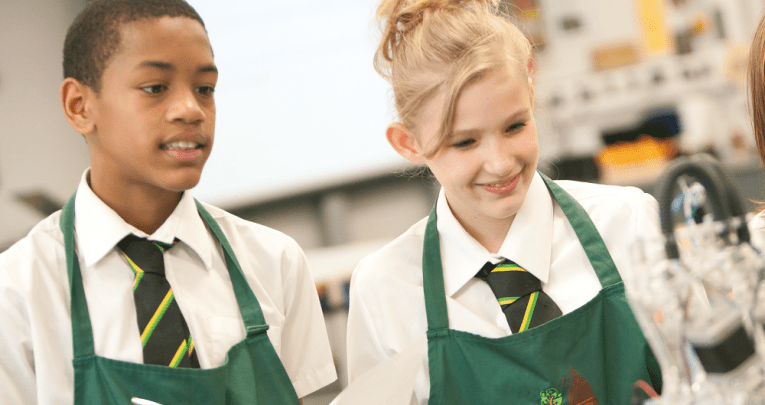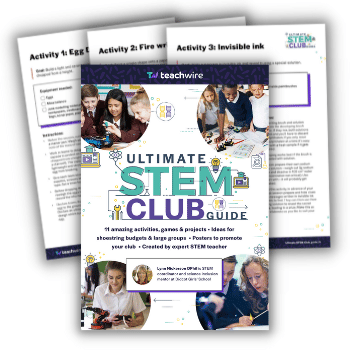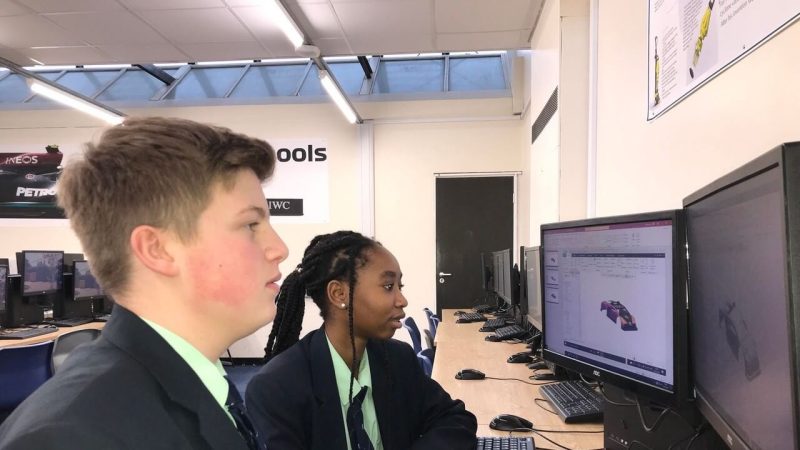5 reasons to feel cheerful about STEM

Gender gap, recruitment crisis, low progression rates; there are plenty of bad-news stories around STEM, but that’s not the full picture, argues Anna Blewett

- by Anna Blewett
- Freelance journalist

Our experts explain why we should all be celebrating STEM.
1. Because ‘feeling stupid’ is normal
“All scientists, technologists, engineers and mathematicians struggle with things,” says Professor Josie Fraser, executive dean of the faculty of STEM at The Open University.
“Part of STEM is having curiosity and a desire to solve a puzzle, but sometimes it feels as though the pieces are always moving.”
In fact, Josie cites the fast pace of change within STEM as one of the obstacles pupils and ‘experts’ will encounter together.
“Sometimes I struggle to understand new discoveries, or to connect them to how I previously understood things. Inevitably there are times when you feel stuck, confused, or plain mystified, but you keep thinking and experimenting and tinkering. For me it’s often about talking to others and reading around the subject. Eventually, you get there and it’s always worth it in the end!
“It’s impossible for anyone to keep completely up to date with the latest STEM developments but what teachers can do is discuss how sticking with the challenge and embracing the excitement of trying to understand are things that make you a scientist. I think it’s essential that the STEM talent of the future understand early that it doesn’t have to come ‘easy’; it’s about solving the problem over time and usually with help from others too.”
2. Because that vacancy may get filled by a boffin
With a doctorate in physics from Oxford and a spell as a fellow in biophysics at Harvard under his belt, Dr Richard Branch may seem a little over qualified to teach KS3 and KS4 science.
In fact, he’s just one of the PhD community mobilised by UK charity The Brilliant Club to increase admissions from pupils from under-represented backgrounds into highly-selective universities – and plug the staff shortages in these fields.
“Like everyone I get the questions ‘Why is this relevant?’ and ‘Why are we studying this?’ I also describe my own experiences working in this field to pupils, and they realise this is a subject connected to the real world with real applications and prospects. They get on board quite quickly after that.”
By placing high-level specialists in non-selective state schools through its Researchers in Schools programme, The Brilliant Club aims to push up standards and give pupils new horizons.
“We all come from a research background and value evidence-based practice,” says Richard, “so we do a lot of dissemination around how pupils can make marginal gains in their practical work. I think the benefits of my experience – the fact I’ve gone down that track and worked as a professional scientist, in academia and industry – are quite tangible to the students.”
3. Because it’s not just schools that give a sh*t
When the Airbus Foundation, the philanthropic arm of the aviation giant, extended its mentoring scheme to its Wales this month it highlighted the willingness of some in the private sector to take the STEM skills gap into their own hands.
Last year the Flying Challenge brought 30 KS3 pupils from Bristol Metropolitan Academy into its site at Filton for a yearlong programme of sessions with Airbus employees to develop technical skills and learn about STEM careers.
This year pupils local to the wing manufacturing site at Broughton, North wales, are benefitting from Women in STEM and Flying Challenge events.
In Dorset, engineering firm Superior works with local schools to generate interest in engineering and encourage school leavers into its onsite training academy.
“It’s so important for industry and schools to work closely together to ensure local students are receiving the core skills and training, in addition to their education, to be successful once leaving school,” says Katie Bodman, head of Superior’s training academy.
Trending
“These skills and training can be delivered by industry experts if a good relationship is held with schools.” And the benefits are clear for a company working in a field with a yawning skills gap. “As a manufacturing company, we look for students who can communicate, have a willingness to learn and can demonstrate their enthusiasm.”
4. Because maybe they’re already experts
“The current generation accept these subjects more readily because they rely on technology much more than we did at their age,” suggests Richard Branch. “Social media and the mobile tech revolution means they’re all techies themselves.”
Andy Snape, assistant head of faculty at Newcastle-under-Lyme College (which hosts local secondary pupils in its STEM-focused LEGO Education Innovation Studio), agrees.
“Building LEGO or playing Minecraft are just two examples which allow youngsters to engage with hands-on, problem-solving situations that have a foot in both camps of play and learning,” he says.
“Any form of problem solving activity which makes youngsters think about the different technical elements of STEM-related disciplines is a clear first step when it comes to tackling these subjects. The aspect of play throughout these activities also gives rise to a better sense of enjoyment and fulfillment, which helps when young people are making decisions about their future.”
Andy’s encouraged that extra-curricular screen heroes, from pop-science pin-up Professor Brian Cox to engineering whiz Holtzmann in 2016’s all-female reboot of Ghostbusters, may also be impacting positively.
“I think the tide is slowly turning and the STEM sector is being seen a viable option in which to study and make a career,” he says.
“But we need to continue to expose the exciting opportunities in these areas, and highlight the great work done by engineers, mathematicians, scientists and technologists.”
5. Because there’s plenty of free stuff that helps
“There are a lot of interesting teaching and learning resources out there, whether because of the agenda to promote women in STEM or because of the known skills gap,” says Professor Josie Fraser.
“From the [outreach teams at the] Open University and many other higher education institutions, to great organisations like STEMettes and WISE, who are really excited about engaging with schools and science teachers.
The latter run STEM education activities and offer support for kids in general, and girls in particular, to engage with science, technology, engineering and maths.”
The Open University also provides free or low cost ‘MOOCs’ (Massive Online Open Courses), which can be found at FutureLearn.com, and authors resources on OpenLearn.
“These can be great for teachers and students with budding STEM interests and can offer either extra information, an alternative way to look at a subject area that someone is finding tricky, or great resource for a project or special interest topic.”










